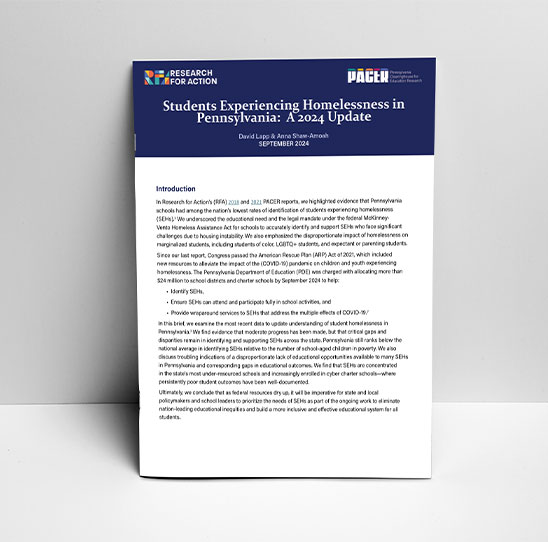In Philadelphia, the School District (SDP) is home to a diverse community of English Learners (ELs) hailing from various ethnic backgrounds, cultures, and languages. ELs are students identified through the WIDA English proficiency screener, marked by a composite score designating them as ELs. The SDP has witnessed a substantial increase in its EL population, from around 12,000 in 2014-15 to nearly 20,000 in 2022-23, marking a 66% rise. During this period, a remarkable 106-118 different home languages were spoken each school year.
This community-driven research, conducted by the Philadelphia Education Research Consortium (PERC),* is focused on 7th and 8th-grade English Learners, often overlooked in research but pivotal as they approach the transition to high school. A successful transition can significantly enhance a student’s chances of graduating and being prepared for higher education and careers. In complement to broader insights about EL diversity from PERC partner researchers, this study zeroes in on these students at this crucial juncture.
By illuminating the diversity in backgrounds and experiences of 7th and 8th-grade English Learners, this study challenges the notion that the EL population is homogenous. It serves as a foundational step towards further research on effectively studying the experiences and environments of ELs, highlighting diversity in home languages, countries/regions of birth, and the duration of EL status leading up to their high school transition.
The study’s findings are useful for District leaders, central office staff, school leaders, and community organizations supporting Philadelphia students transitioning to high school. Understanding the EL student population is crucial for enhancing their experiences and ensuring their success, making these insights relevant for all education leaders and community members committed to improving ELs’ learning experiences.
Insights from the Study
- ELs in 7th and 8th grade in the School District of Philadelphia represent a linguistically diverse group, with students speaking at least 85 different home languages from 2017-18 to 2020-21.
- While Spanish remains the predominant language, the prevalence of less common languages, like Portuguese, has notably increased. Portuguese is now the second most common home language, surpassing Arabic and Mandarin.
- A growing number of 7th and 8th-grade ELs were born in Central America, particularly Guatemala and Honduras, reflecting a significant increase.
- The percentage of 7th and 8th-grade ELs enrolled within a school varies widely, with some schools experiencing substantial increases.
- Approximately 40% of 7th and 8th-grade ELs are classified as Long-Term English Learners (LTELs), indicating that they have remained ELs for six or more years.
- The pandemic disrupted the EL reclassification process, resulting in fewer students being newly classified as ELs or reclassified as “Former ELs.”
Policy and Practice Recommendations
- Periodic tracking of changes in the share and linguistic profile of ELs at each school can help address evolving language support needs.
- Bilingual Counseling Assistants (BCAs) can provide crucial support to 7th and 8th-grade ELs and their families, acting as linguistic and cultural bridges and helping navigate school systems.
- Centrally allocated ESL teachers and EL support personnel can assist schools facing rapid increases in EL enrollment, especially when language needs become apparent after the start of the school year.
This research underscores the rich diversity of Philadelphia’s EL population, and it offers practical insights to inform policies and practices that support their educational journey, ultimately contributing to their success in high school and beyond.
* PERC research is produced through collaboration between researchers from Research for Action and the School District of Philadelphia’s Office of Research and Evaluation. For more information, please visit phledresearch.org.









